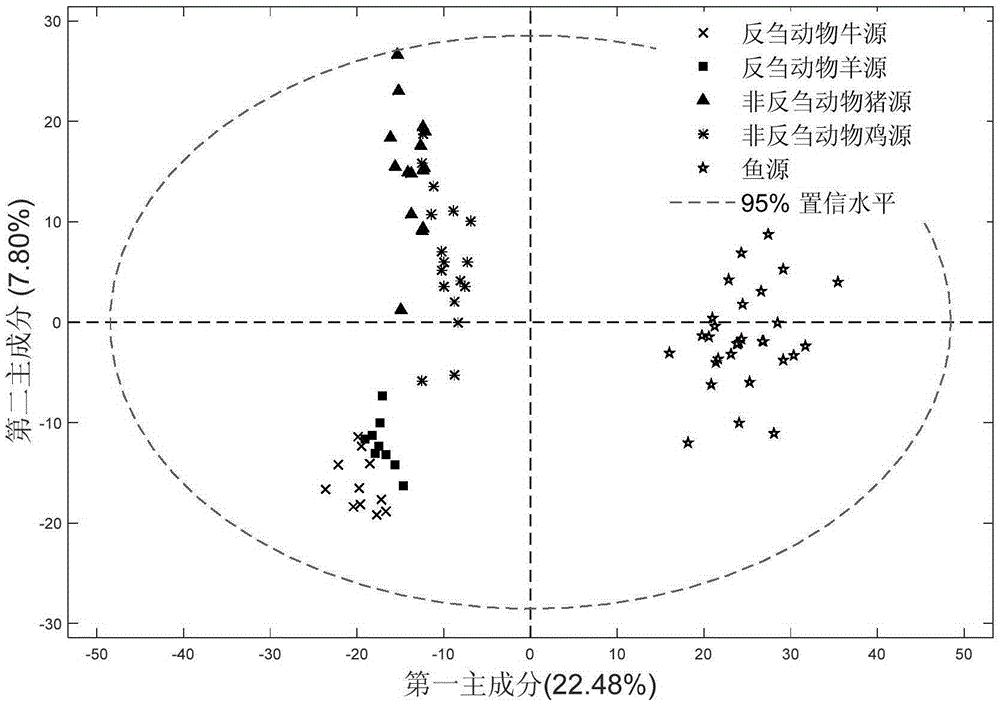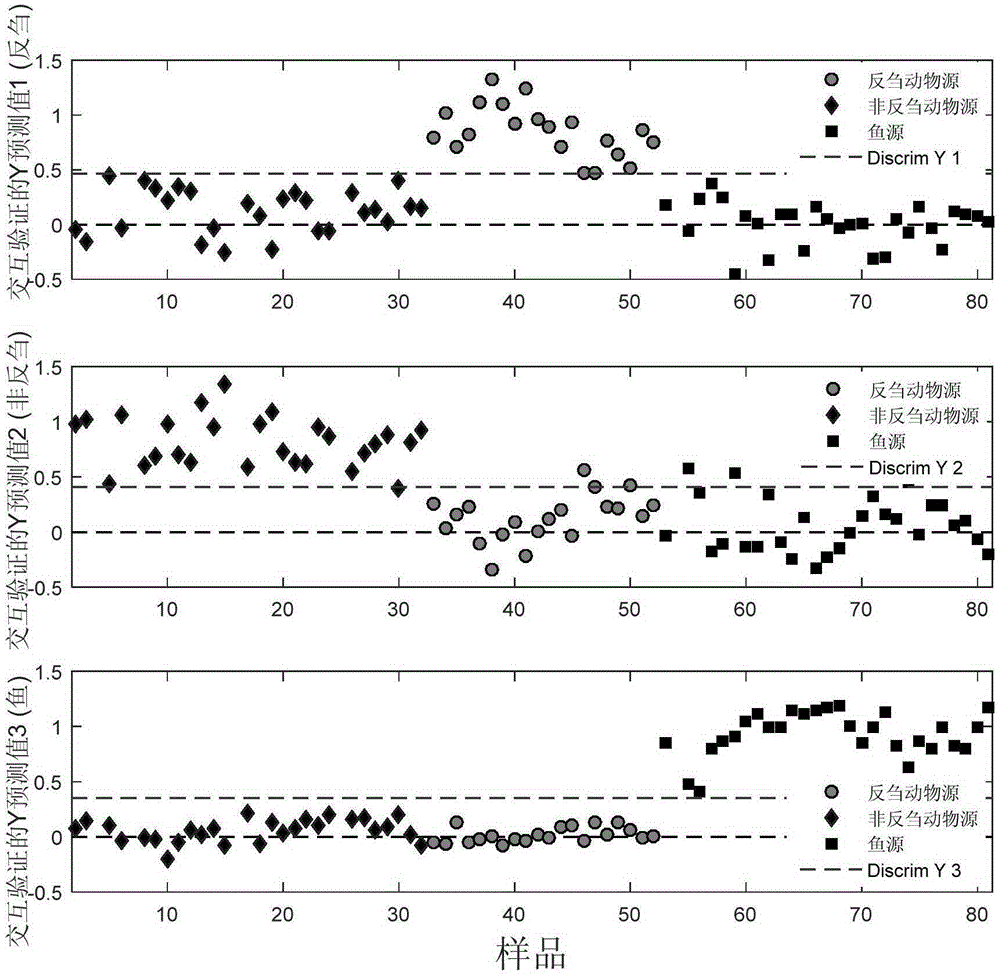Ruminant animal-origin feedstuff identification method based on lipid Raman spectrums
A technology of animal-derived feed and Raman spectroscopy is applied in the field of identification and analysis of animal-derived feed raw materials using Raman spectroscopy, which can solve problems such as low detection accuracy, meet analysis requirements, effectively identify analysis, and implement feasible The effect of sustainable development and recycling
- Summary
- Abstract
- Description
- Claims
- Application Information
AI Technical Summary
Problems solved by technology
Method used
Image
Examples
Embodiment 1
[0037] 1) Collection and preparation of research samples
[0038] The research samples are 70 animal-derived feeds of known animal species, including products collected from domestic and foreign protein feed enterprises and self-made samples by relevant quality inspection departments. The samples cover terrestrial animal meat meal, bone meal, meat and bone meal and fishmeal, etc., including 21 samples from ruminants (11 from cattle, 9 from sheep), 32 samples from non-ruminants (11 from pigs, 13 from chickens) and 26 samples from fish.
[0039] All research samples were pulverized by a cyclone mill and passed through a 1.0 mm sieve.
[0040] 2) Lipid sample extraction
[0041] The lipid samples of the above-mentioned research samples were extracted by the Soxhlet extraction method using an automatic fat analyzer (SoxtecTM2050, FOSS Company, Denmark).
[0042] 3) Raman spectrum information data of lipid samples
[0043] BrukerOpticsFT-RamanVERTEX70v (Bruker, Germany) was used...
PUM
 Login to View More
Login to View More Abstract
Description
Claims
Application Information
 Login to View More
Login to View More - R&D
- Intellectual Property
- Life Sciences
- Materials
- Tech Scout
- Unparalleled Data Quality
- Higher Quality Content
- 60% Fewer Hallucinations
Browse by: Latest US Patents, China's latest patents, Technical Efficacy Thesaurus, Application Domain, Technology Topic, Popular Technical Reports.
© 2025 PatSnap. All rights reserved.Legal|Privacy policy|Modern Slavery Act Transparency Statement|Sitemap|About US| Contact US: help@patsnap.com



